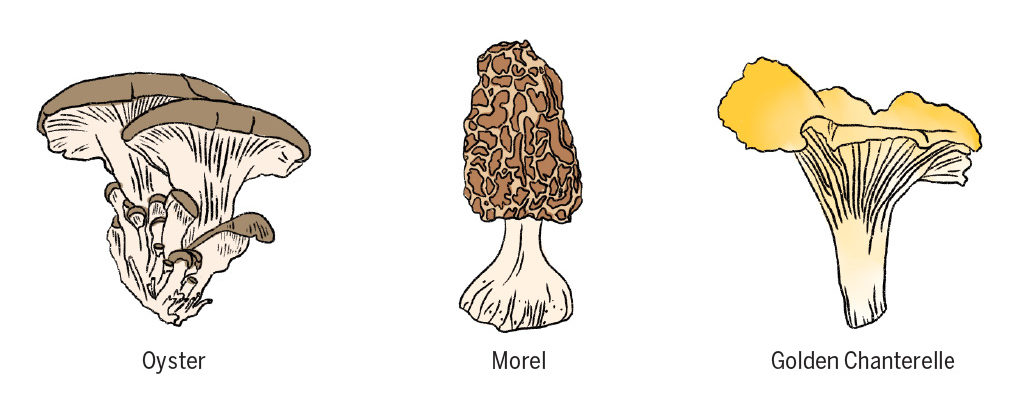The Forager’s Guide to Wild Mushrooms in Texas
Whether you see wild mushrooms and think of magical fairy rings or simply your next meal, all winter wanderers can use this guide to spotting wild mushrooms in Texas. Just remember, if you are not an expert, please consult with one before eating any mushroom you cannot identify!
Foraging Warnings
- There are around 10,000 species of wild mushrooms that grow in Texas, and at least 100 of them are toxic. If you’re not sure you can identify the mushroom as safe to eat, don’t risk it. When in doubt, throw it out!
- Avoid foraging on private property or on Texas state park land, as you could be fined.
If You Forage
- If you pick a mushroom, it’s best to cut it about an inch from the base, which allows it to regenerate.
- You’ll have your best luck foraging in cool weather after heavy rains.

Types You Can Find
- Oyster mushrooms stand about 1 to 4 inches tall. They have brown, funnel-shaped caps with tall, whitish-yellow gills. They like the mild winters here and grow around stumps of trees.
- Morel mushrooms grow in moist areas, around dead or dying trees, and after recent fires under dead or burned trees. They are identifiable by the honeycomb like ridges in their caps.
- Golden chanterelle mushrooms sport bright orange-yellow caps and smell like apricots. You can often spot them in forests near oaks and conifers.
Avoid!
Death caps (amanita phalloides) are spreading across North America. They are one of the deadliest mushrooms in the world, and it’s essential that if you’re picking mushrooms, you know how to identify them — they’re often mistaken for the safe paddy straw mushroom. Death caps are mostly white with white spores, but they have a greenish- yellow tint to their caps. They measure 3-to-6 inches in diameter and have many crowded white gills. They also exude an unpleasant ammonia like smell. If you are at all in question as to whether a mushroom is a death cap, don’t risk it!
Cook up your mushrooms in this delicious risotto.
© 2021 Texas Farm Bureau Insurance
